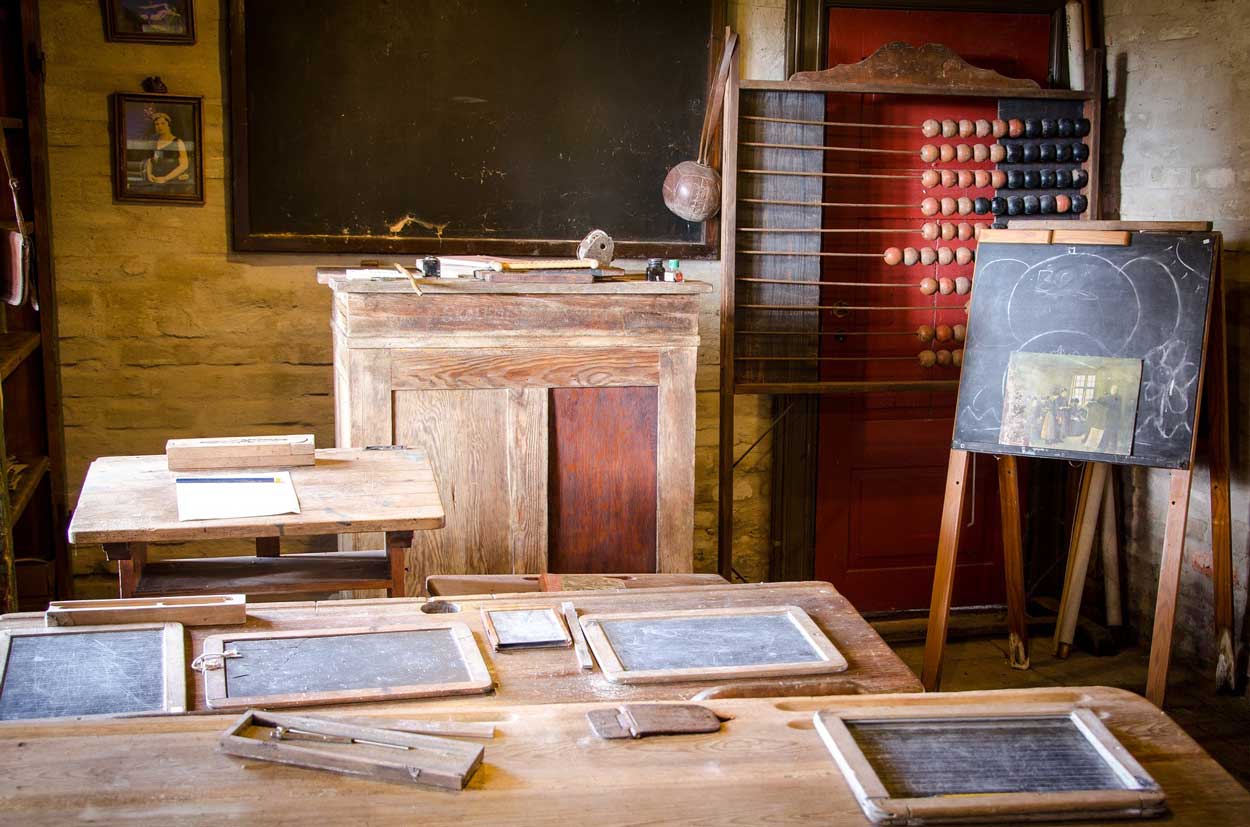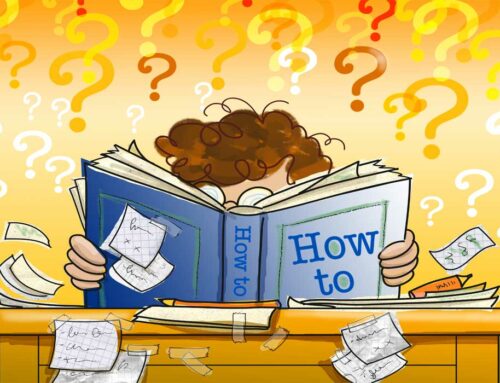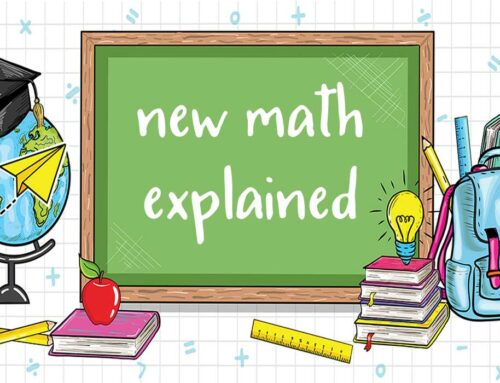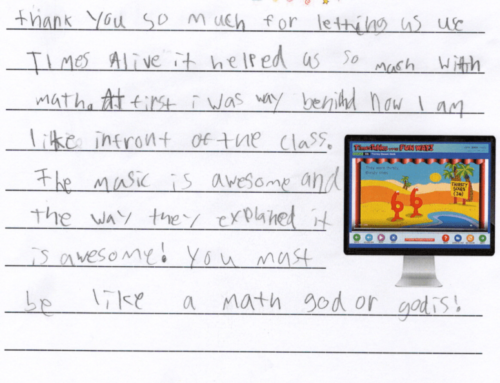When children are ready to learn multiplication, you may wonder what the best order is for teaching times tables. Most educators agree that teaching 0s, 1s, and 2s should come first. They’re the simplest sets to grasp.
Students feel successful when they quickly learn the answer to one times any number is that number. Two times a number means add that number twice. These are concepts that kids who know how to add will understand.
In Times Tables the Fun Way, we turn numbers into characters and tell stories so kids can have a visual image to easily retrieve the answers to the math facts. For example, for teaching ones we say, “One is like a mirror. When six is with one, he looks back and sees himself so the answer is six.”
In order for students to experience quick success, the easier stories are taught first. Kids get an ah-ha moment and think, “I can do this. I get it.” They’re eager to learn more stories in the program. Stories are reinforced with songs and game activities to solidify the facts. As kids have fun learning math, their anxiety stays low, which is the number one ingredient for math success.
Different Strategies for Teaching Times Tables
Like learning 0s, 1s, and 2s first, Some educators think it’s efficient to teach 10s and 5s at the start. They’re fairly simple number sets to grasp.
For example, math blogger, Shelley Gray, teaches multiplication facts in this order: x2—x10—x5—x1—x0—square facts (ex. 3×3, 4×4, 5×5, etc)—x4—x3—x9—x6—x7—x8
Times Tables Success Formula
There’s no one right way to teach multiplication facts. A quick online search shows myriad opinions for what order to teach times tables. In Times Tables the Fun Way, we focus on the facts that are easiest to remember. The workbook and the support materials are presented assuming the student has learned the stories in the order suggested in the lesson plan of the Teacher’s Manual. Here is the sequence for Times Tables the Fun Way:
Zeros, Ones, Twos, 3×3, 3×4, 8×8, 7×7, 4×4, 6×4, 7×8, 6×6, The Fives, 6×3, 6×8, The Nines, 3×7, 7×4, 7×6, 8×4, 3×8.
This order sequence is carefully designed to present the easiest stories and facts first to promote a feeling of early success. If this order is followed, all the support materials will be sequenced to present the appropriate quizzes, games, and activities.
When kids feel the success of remembering the answers, when nothing else has worked in the past, they end the day’s math lesson feeling empowered.
Times Tables The Fun Way teaches students to memorize the 1 through 9 facts. We cover double digit multiplication in our student workbook so students don’t necessarily need to commit the 10s, 11s, and 12s, to memory. These facts are not necessary to do higher grade level skills like fractions, division, and decimals, so we don’t focus on memorizing 10s, 11s, and 12s.
Times Tables the Fun Way’s teaching sequence is based on a success formula that has helped thousands of children master their math facts for nearly 30 years.
How NOT to Teach Times Tables
Opinions differ on the best sequence for teaching times tables, but most educators agree—teaching them in numerical order makes it harder for kids to retain the facts. Students feel the pressure mount as they begin with the ones and twos and move up scale to the sixes through nines. It is better to skip around and treat the facts as separate little stories that get learned one at a time.
It’s also hard for kids to grasp the concept for multiplication unless you lay the groundwork for what multiplication is and why we learn times tables.
“Before children start to learn and memorize times tables, they should have a good understanding about what multiplication is all about,” says Math, Kids, and Chaos blogger, Hannah. “After all, there’s really no value in having children rote learn math facts when they don’t truly understand what they mean.”
Kids sometimes feel overwhelmed when they’re introduced to multiplication. If they see giant pages of blank times tables up to 100, the intimidation factor skyrockets. Times Tables the Fun Way exponentially increases students’ success by reinforcing math lessons with stories, songs, games, and activities.
The Times Tables the Fun Way system is designed as an introduction to times tables for 2nd or 3rd graders, but it can also be used in special education programs and in the higher grades for review or learning of the more difficult or forgotten facts. Times Tables the Fun Way™ is available in print and digital formats to suit every kind of learner and teaching environment. School licenses are available too.
Start your free trial of Online Times Alive for Macs and PCs (or Times Alive app for iPhones and iPads) today. Find out why kids continue to achieve success with our award-winning math lessons.







Leave A Comment